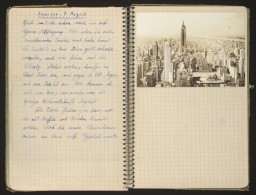<< Previous | Displaying results 761-770 of 6707 for "" | Next >>
-
Teddy bear carried by a child on a Kindertransport
ArtifactTeddy bear belonging to Jack Hellman as a child. He carried it with him when he left for England from Germany on a Kindertransport in early 1939.
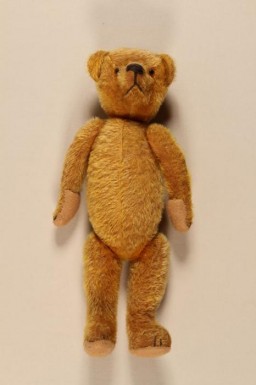
-
Portrait of Masha Rolnik, by Esther Lurie
Artifact"Portrait of Masha Rolnik, Leibisch concentration camp, 1944" by Esther Lurie. This image shows three sketches of Masha Rolnikaite (Rolnik) drawn by Esther Lurie, in approximately 1965, for the cover of Masha's memoir, Ikh muz dertseyin [I have to tell]. They reproduce the drawing of Masha that Esther made when both were prisoners in a forced-labor camp. Esther Lurie was active in documenting scenes of life in the Kovno ghetto and in forced-labor camps. She buried most of her works in the hope that…
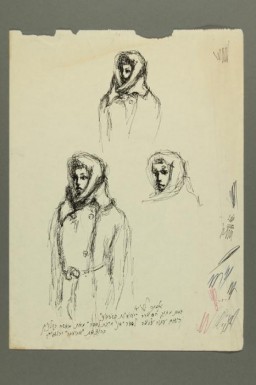
-
Print of "Portrait of a Young Girl with Two Yellow Badges" by Esther Lurie
ArtifactThis image shows a print of a portrait drawing by artist Esther Lurie. Lurie documented scenes of life in the Kovno ghetto and contributed to the secret archives there. The subject of the portrait is a young woman in a checked dress with two Star of David patches. This print is a version of the drawing, "Portrait of a Young Girl with Two Yellow Badges," which Lurie did in the Kovno ghetto and for which she was awarded the Dizengoff Prize in 1946 in Palestine. Because the majority of Lurie's works were…
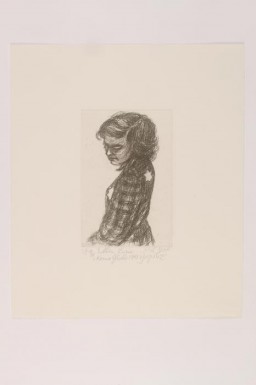
-
Hans Vogel's diary entry on boarding the refugee ship Nyassa
ArtifactHans Vogel and his family fled Paris following the German invasion. They eventually received papers allowing them to immigrate to the United States. During this time, Hans kept a diary that contains postcards, hand-drawn maps, and other illustrations of their flight. This page describes the lead-up to their departure for the United States, from Lisbon, on the Nyassa. Hans was born in Cologne, Germany on December 3, 1926. The family left Germany in 1936, settling in Paris. They remained there until the…

-
Hans Vogel's diary entry about receiving US immigration papers
ArtifactDiaries reveal some of the most intimate, heart-wrenching accounts of the Holocaust. They record in real time the feelings of loss, fear, and, sometimes, hope of those facing extraordinary peril. The diary of Hans Vogel, who fled Paris with his family while his father was interned, contains hand-drawn and colored maps of their flight. This page describes receiving papers allowing the family to immigrate to the United States. Hans was born in Cologne, Germany on December 3, 1926. The family left Germany…

-
Selma Engel diary entry about arrival in Sobibor
ArtifactDiaries reveal some of the most intimate, heart-wrenching accounts of the Holocaust. They record in real time the feelings of loss, fear, and, sometimes, hope of those facing extraordinary peril. Selma Wijnberg and Chaim Engel met and fell in love in the Sobibor killing center. After the young couple made a daring escape during the camp uprising and fled into hiding, Selma began a diary to record their experiences. The diary was written in 1943-1944 while Selma was in hiding in German-occupied Poland.…
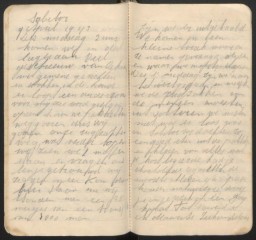
-
Selma Engel diary entry about escaping during the Sobibor uprising
ArtifactDiaries reveal some of the most intimate, heart-wrenching accounts of the Holocaust. They record in real time the feelings of loss, fear, and, sometimes, hope of those facing extraordinary peril. Selma Wijnberg and Chaim Engel met and fell in love in the Sobibor killing center. After the young couple made a daring escape during the camp uprising and fled into hiding, Selma began a diary to record their experiences. The diary was written in 1943-1944 while Selma was in hiding in German-occupied…
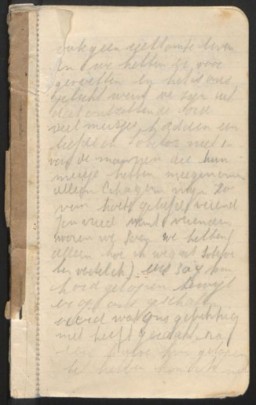
-
Selma Engel diary entry about life in hiding
ArtifactDiaries reveal some of the most intimate, heart-wrenching accounts of the Holocaust. They record in real time the feelings of loss, fear, and, sometimes, hope of those facing extraordinary peril. Selma Wijnberg and Chaim Engel met and fell in love in the Sobibor killing center. After the young couple made a daring escape during the camp uprising and fled into hiding, Selma began a diary to record their experiences. The diary was written in 1943-1944 while Selma was in hiding in German-occupied…

-
Hans Vogel's diary entry describing the voyage to the United States
ArtifactHans Vogel and his family fled Paris following the German invasion. They eventually received papers allowing them to immigrate to the United States. During this time, Hans kept a diary that contains postcards, hand-drawn maps, and other illustrations of their flight. This page describes the voyage on board the Nyassa to the United States. Hans was born in Cologne, Germany on December 3, 1926. The family left Germany in 1936, settling in Paris. They remained there until the outbreak of World War II.…
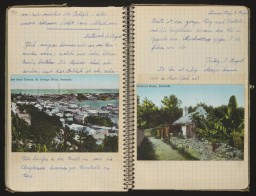
-
Hans Vogel's diary entry on arriving in New York
ArtifactHans Vogel and his family fled Paris following the German invasion. They eventually received papers allowing them to immigrate to the United States. During this time, Hans kept a diary that contains postcards, hand-drawn maps, and other illustrations of their flight. This page describes arriving in New York. Hans was born in Cologne, Germany on December 3, 1926. The family left Germany in 1936, settling in Paris. They remained there until the outbreak of World War II. Hans's father, Simon, was interned…
